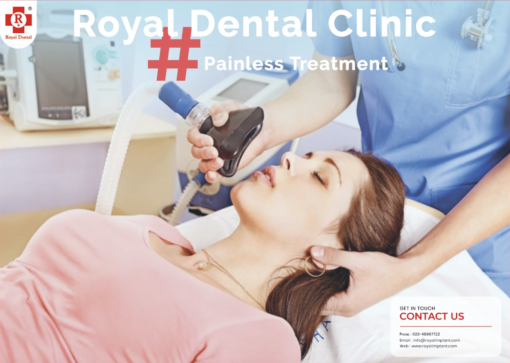Sedation dentistry is a specialized treatment option for people who have dental anxiety or fear of going to the dentist. It allows individuals to receive dental care without experiencing fear or discomfort. During sedation dentistry, patients may be given a sedative through a pill, an injection, or an inhaled gas, depending on the type of sedation they receive. The sedative helps the patient relax and can make the dental procedures more comfortable and easier to tolerate. Sedation dentistry is also beneficial for people who have a hard time sitting still in the dental chair or who need extensive dental work. Knowing what to expect and how to get sedated for a dental procedure can help make the experience more comfortable and less stressful.
What is sedation dentistry?
Sedation dentistry is the use of medications to induce a controlled state of deep relaxation and/or mild unconsciousness to make a dental procedure more comfortable. During sedation dentistry, patients are kept aware enough to respond to requests and directions from their dental team and are able to respond to verbal cues, such as “try to relax.” Sedation is not a “knock-out” anesthetic, where the patient is unconscious.

Sedation dentistry only induces a state of deep relaxation and/or mild unconsciousness. This is necessary because patients need to be able to respond to verbal cues and directions from the dental team and be able to respond to questions like, “Is this tooth sensitive?” or “Does this instrument feel warm?”
Types of Sedation dentistry
Oral sedation: Oral sedation is the mildest form of sedation used during a dental procedure. It’s commonly given as a pill, but it can also be given as an oral liquid. Oral sedation is also used for minor surgical and diagnostic procedures.
Nitrous oxide (laughing gas) sedation: Nitrous oxide is a colorless, non-flammable gas that has the ability to relieve anxiety and improve the overall experience of a dental visit. It’s often given through a mask that fits over your nose. It’s a common and safe form of sedation that can make dental procedures easier to tolerate.

Local anesthesia with conscious sedation: Local anesthesia is commonly used during a dental procedure. Conscious sedation is given to make the procedure as comfortable as possible. It involves the use of a mild tranquilizer and/or pain medication to relax the patient and help them manage any discomfort they may feel during the procedure.
IV conscious sedation: Intravenous sedation is the most intense form of sedation dentistry used during a dental procedure. When given through an intravenous (IV) line, this form of sedation can be very safe and effective.
Benefits of sedation dentistry
Reduces anxiety and fear of dental visits: People who have dental anxiety often stay away from the dentist. When they experience anxiety or fear during a dental visit, they may not get the dental care they need. Sedation dentistry is an excellent option for people with dental anxiety.
Reduces pain: People who fear dental visits often have a high level of pain associated with their dental work. Sedation dentistry can help make the dental procedure more comfortable and can reduce the amount of pain associated with dental work.



Makes dental work more efficient: If you have a lot of dental work to be done, but you have a hard time sitting still in the dental chair, sedation dentistry can help make the experience more comfortable and efficient.
Helps people with special needs or people who are medically compromised: People who have special needs or are medically compromised may not be able to tolerate dental procedures. Sedation dentistry is a great option for these individuals.
How to get sedated for a dental procedure?
If you want to be sedated for your dental procedure, the first step is to schedule a consultation with your dentist to discuss the different types of sedation dentistry. During the consultation, you and your dentist can discuss the various options and come up with a treatment plan that is right for you. You can also schedule a sedation dentistry consultation independently if you don’t feel comfortable discussing the treatment with your dentist. However, it’s important to note that different dental practices may use different names for the same procedure.
This can make it difficult to research the different options and find the best treatment for you. After the consultation, you’ll likely be asked to sign a consent form that states you understand that sedation dentistry is not intended for dental emergencies. You should also be clear about what type of sedation you want. Although your dentist can help you decide, ultimately it’s your decision to get sedated.
What to expect during sedation dentistry?
Sedation dentistry can be administered in a number of ways. Common methods include oral sedation, local anesthesia with conscious sedation, and IV conscious sedation. The type of sedation you get and how you are sedated will vary depending on your needs, the dentist’s preference, and the dental procedure you are receiving. The process of getting sedated begins as soon as you walk into your dentist’s office.
Your dentist will ask you a few questions to assess your level of anxiety and determine if sedation dentistry is right for you:
The next step will be to administer the medication. The way in which you are sedated will depend on the type of sedation dentistry you receive. Oral sedation is given through a pill. Local anesthesia with conscious sedation and IV conscious sedation are administered through an IV line.
You may be asked to lie down or sit in a reclining dental chair with your feet up. You may be given eye masks, headphones, or other soothing items to help you relax. Your dentist may also dim the lights and play soft music to help create a relaxing environment.
You may be able to hear what is going on around you, but you may also feel very relaxed and be unable to respond to questions. You should be able to respond to direct questions such as, “Is this tooth sensitive?” or “Does this instrument feel warm?” but you may be too relaxed to respond.
What to expect after sedation dentistry
Most people feel normal after sedation dentistry. They are often groggy and have trouble concentrating and focusing. It’s important to have a friend or family member drive you home after a dental procedure because you may not be fully aware of what is going on around you.
✦ You may feel lightheaded or dizzy after sedation. You should avoid driving and operating heavy machinery for at least 24 hours.
☚ Also avoid eating or drinking anything other than water for a few hours after sedation dentistry. It’s important to stay hydrated after a dental procedure because the medication can make you feel dehydrated.
✦ It’s normal to feel some lingering effects of sedation dentistry after you leave the dental office. You may feel groggy and tired, and you may have trouble concentrating. You should also plan to rest for a few hours after the procedure.
☚ You may experience nausea after sedation dentistry. It’s important to eat something and drink plenty of fluids to help relieve nausea.
✦ You may have dry mouth after sedation dentistry. This is a normal effect of the medication. You can ease dry mouth by drinking water and chewing gum.
Risks associated with sedation dentistry
While sedation dentistry is very safe and effective, there are some risks associated with the treatment. These include vomiting, nausea, and feeling groggy/dizzy after the procedure. You may be at a higher risk of developing an infection after sedation dentistry. This is because your immune system may be weakened by the medication. You should make sure you are taking care of your mouth after the procedure by rinsing your mouth with water and brushing your teeth.
The risks associated with sedation dentistry include a slight change in the condition of your teeth, gums, or jawbone, vomiting, feeling groggy after the procedure, and having a hard time remembering the details of the procedure. – Some of the risks associated with BZDs, the strongest type of sedation, include confusion, difficulty breathing, and impaired coordination.
Cost of Sedation Dentistry
Although the cost of sedation dentistry will vary based on several different factors, you can expect to pay anywhere from $50 to $500+ per visit. The cost of sedation dentistry includes the cost of the dental procedure itself and the cost of the sedation procedure. The cost of sedation dentistry includes the cost of the dental procedure itself and the cost of the sedation procedure.
Alternatives to sedation dentistry
If you have dental anxiety and would like to try an alternative to sedation dentistry, talk to your dentist about ways to manage your anxiety. Be open and honest with your dentist about your anxiety, and he or she may be able to help you find ways to reduce it before your appointment, such as providing you with relaxation tips or prescribing an anxiolytic medication.
Questions to ask your dentist about sedation dentistry
- Are you a good candidate for sedation dentistry?
- If yes, what types of sedation are available?
- What are the benefits and drawbacks of each type of sedation?
- What are the risks associated with each type of sedation?
- What type of sedation is best for my needs and situation?
- How much does sedation dentistry cost?
- What are my post-procedure instructions?
- When should I follow-up with my dentist?
- How will my dental procedure change with sedation dentistry?
- Can you help me manage my dental anxiety?
Conclusion
Sedation dentistry is a great option for people who have dental anxiety or fear of the dentist. It allows patients to receive dental care without experiencing fear or discomfort. During sedation dentistry, patients may be given a sedative through a pill, an injection, or an inhaled gas, depending on the type of sedation they receive. The sedative helps the patient relax and can make the dental procedures more comfortable and easier to tolerate. If you’re dealing with dental anxiety, sedation dentistry may be a good option for you. It can help you relax and make dental procedures less stressful. Be sure to discuss your options with your dentist.
Sedation dentistry helps you to relax in the dentist’s chair while undergoing any treatment you need. However, Royal Dental Clinics accompany you to the dental practice and back home because you may not be in a position to drive vehicles yourselves. Besides the above, sedation dentistry makes it convenient for you to receive any or all dental treatments without any anxiety
If you have any dental problems, then make an appointment with our expert Dentist at Royal Dental Clinics. We have highly experienced dentists who treat your dental issues and provide perfect smiles that last forever.






